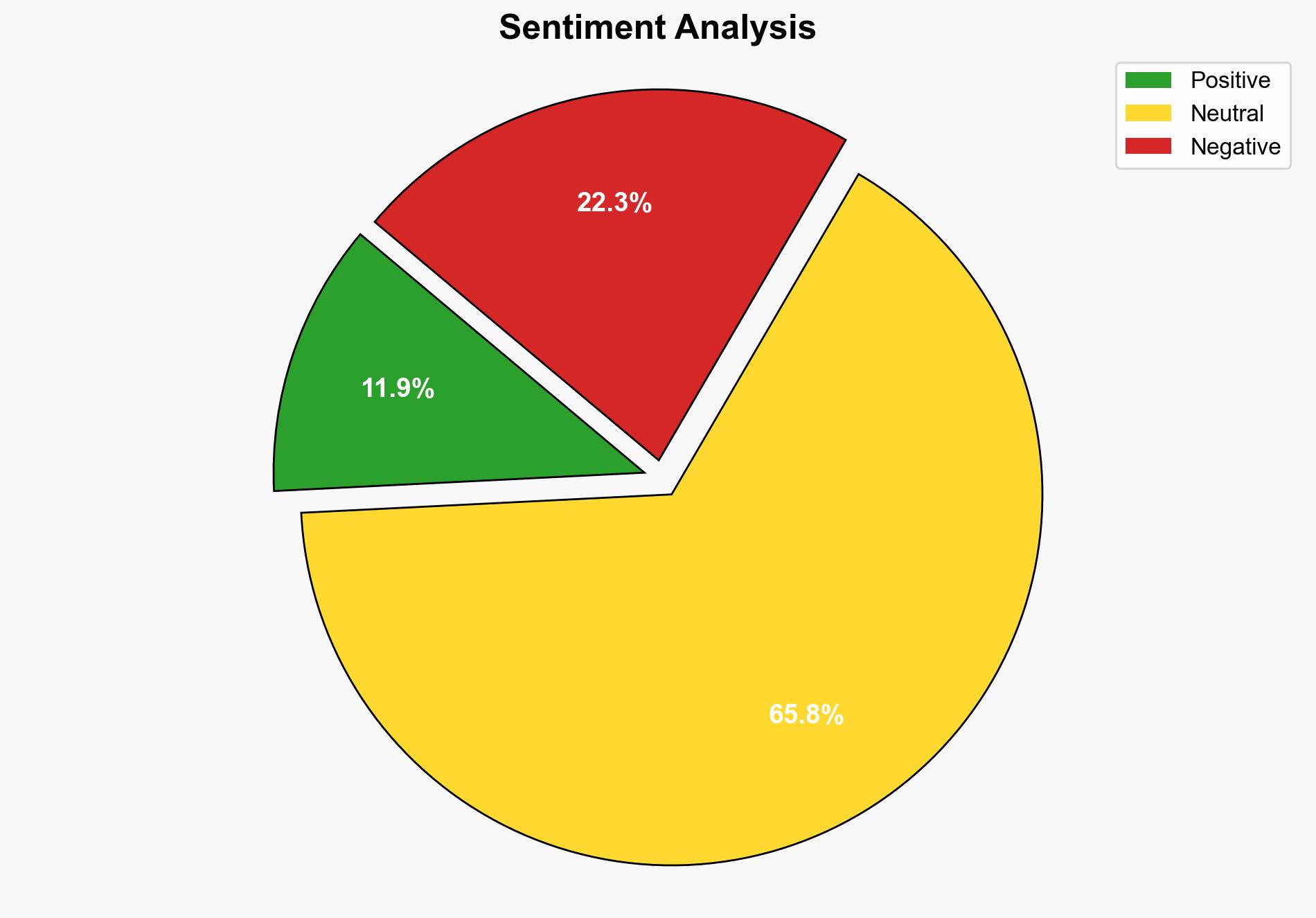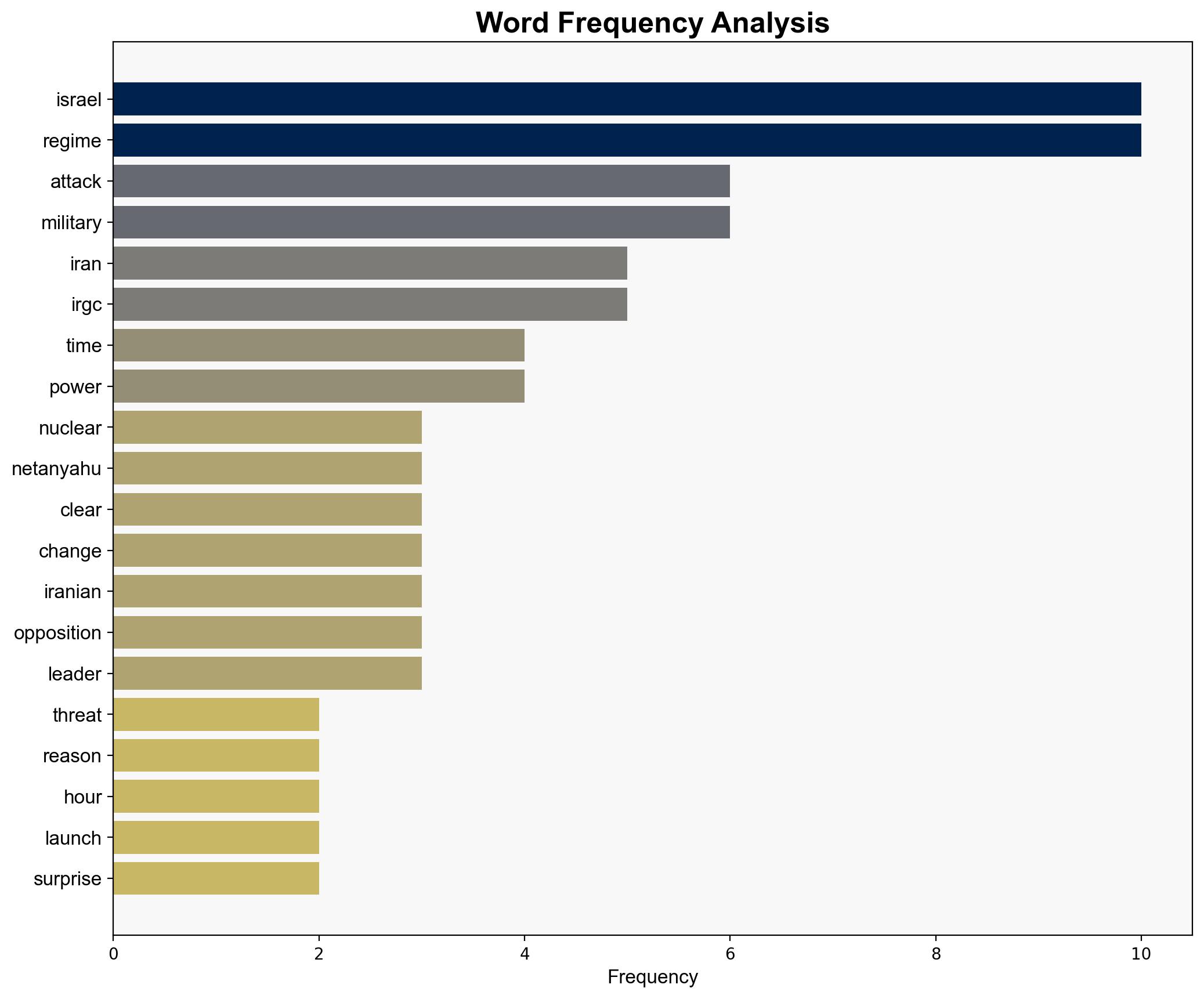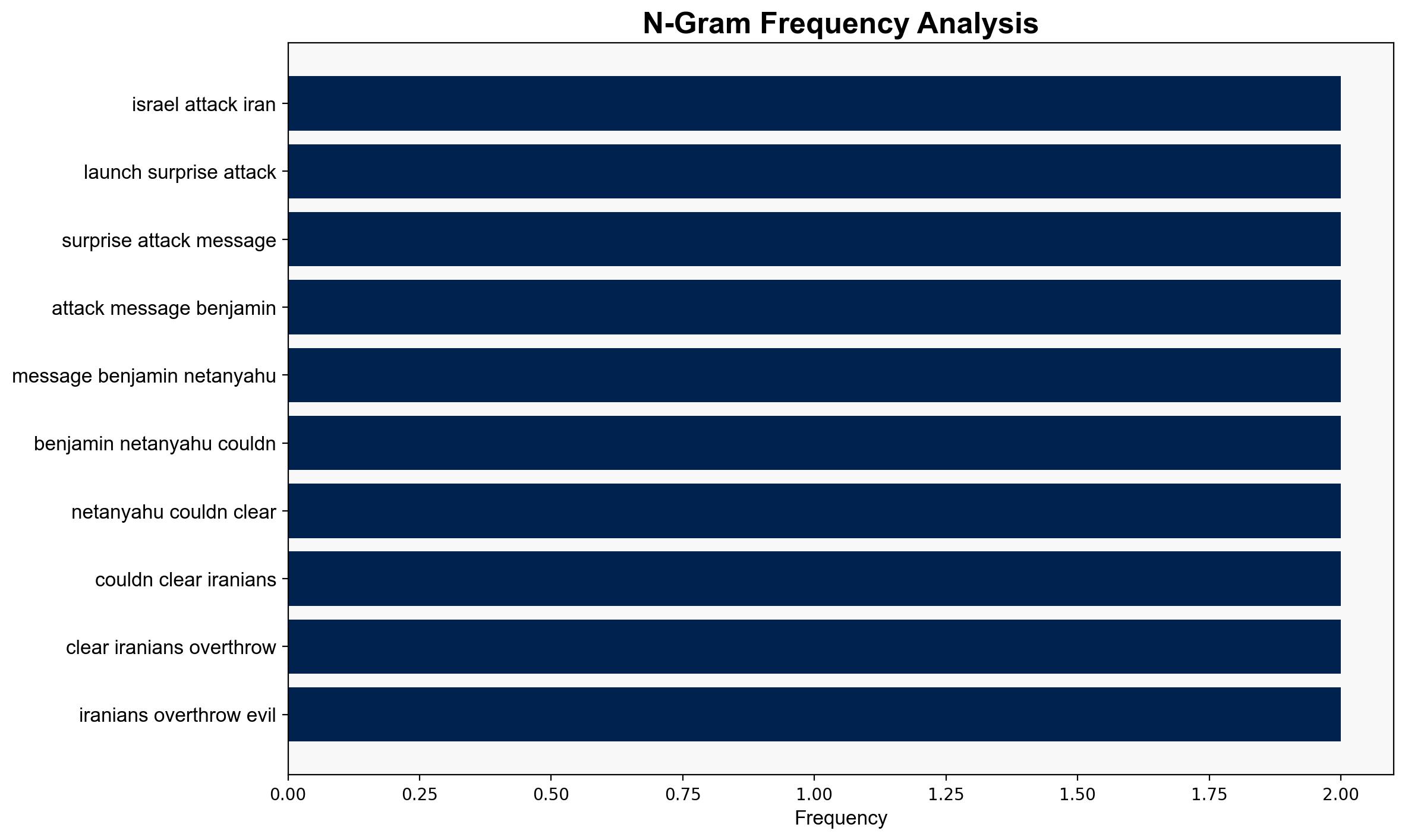Nuclear threat wasn’t the only reason Israel attacked Iran – Sky.com
Published on: 2025-06-14
Intelligence Report: Nuclear threat wasn’t the only reason Israel attacked Iran – Sky.com
1. BLUF (Bottom Line Up Front)
The recent Israeli attack on Iran was driven by dual objectives: countering the nuclear threat and facilitating regime change in Tehran. This strategic move aims to destabilize Iran’s current regime, perceived as oppressive and hostile, while simultaneously addressing the nuclear proliferation threat. The attack underscores Israel’s broader geopolitical strategy in the region, emphasizing both immediate security concerns and long-term political objectives.
2. Detailed Analysis
The following structured analytic techniques have been applied to ensure methodological consistency:
ACH 2.0
The analysis suggests that Israel’s actions are not solely reactive to nuclear threats but are also proactive measures to weaken Iran’s regime. By targeting senior leaders and military capabilities, Israel seeks to diminish the Iranian government’s power and influence.
Indicators Development
Monitoring of digital communications and propaganda reveals an increase in rhetoric supporting regime change. This suggests a coordinated effort to incite internal dissent and weaken the regime’s legitimacy.
Narrative Pattern Analysis
The narrative of “freedom and liberation” is being leveraged to galvanize opposition within Iran. This narrative is likely to be used to recruit and incite further unrest, potentially leading to increased internal conflict.
3. Implications and Strategic Risks
The attack could escalate regional tensions, potentially provoking retaliatory actions from Iran or its proxies, such as Hezbollah or Hamas. There is a risk of broader destabilization in the Middle East, with potential impacts on global energy markets and international relations. The internal unrest in Iran could either lead to regime change or further entrenchment of the current regime through increased repression.
4. Recommendations and Outlook
- Enhance intelligence sharing among allies to monitor and counter potential retaliatory actions by Iran or its proxies.
- Support diplomatic efforts to de-escalate tensions and promote dialogue between regional powers.
- Scenario-based projections:
- Best case: Successful regime change leading to a more stable and cooperative Iranian government.
- Worst case: Escalation into a broader regional conflict involving multiple state and non-state actors.
- Most likely: Continued low-intensity conflict with intermittent escalations and ongoing internal unrest in Iran.
5. Key Individuals and Entities
Benjamin Netanyahu, Ayatollah Ali Khamenei, Islamic Revolutionary Guard Corps (IRGC)
6. Thematic Tags
national security threats, cybersecurity, counter-terrorism, regional focus




